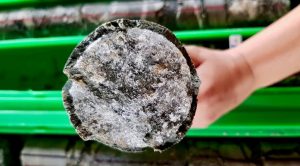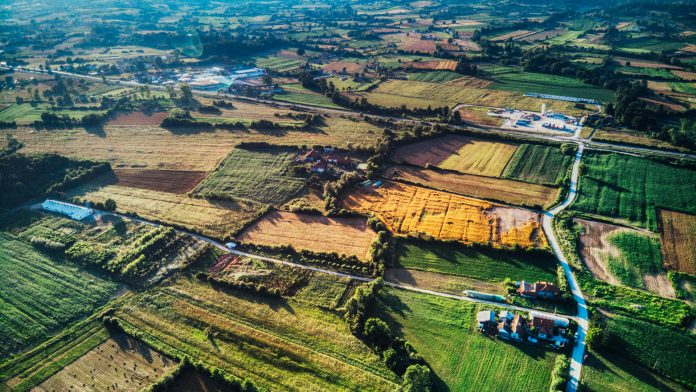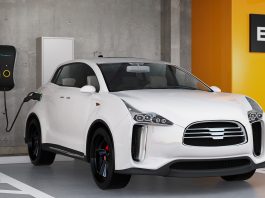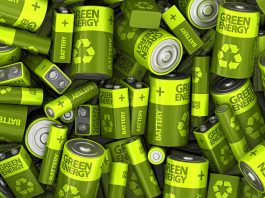Euro Lithium speaks to Innovation News Network about its long-term vision for sustainable mining with the Valjevo Project.
Lithium and borates will play an essential role as the world endeavours to reach its carbon-neutral goals. Classified as ‘Critical Raw Materials’ by the EU Commission, finding sustainable methods to extract these materials with minimum impact on local communities and the environment is of the upmost importance. Using alternative mining technologies that are less invasive than conventional methods and sourcing energy from renewable sources, Euro Lithium hopes to develop the world’s largest known lithium and borate deposit while maintaining a focus on profitability and the welfare of the environment and surrounding communities.
Innovation News Network Junior Editor Lorna Malkin speaks to Euro Lithium’s Vice President Alexander Palkovsky about the company’s vision to become a secure and sustainable supplier of lithium and borates for the 21st century and beyond.
Can you tell me about Euro Lithium’s Valjevo Project and why this area, in particular, aligns with your overall vision for the sustainable production and distribution of lithium?
Like water, lithium can be found everywhere on the Earth’s crust. But while there is so much water on our planet, how much of it is drinkable? If we apply this analogy to lithium, how much of the discoverable lithium can be both economically and sustainably mined to make batteries for electric vehicles and the power grid? While there are two conventional ways of extracting lithium – from brines in the Andes of South America and from hard rock in the Australian Outback – these conventional sources face various challenges ramping up production and have some environmental and social downsides. The reality is that demand for lithium is growing faster than supply, and alternative sources will therefore need to be tapped to enable a cost-effective transition to the green economy.
With the Valjevo Project, we intend to fill this expected supply gap, especially in Europe, by extracting lithium from clays. Similar to geothermal brines, there is a relatively low concentration of lithium in these types of minerals; however, it is the resource size and scalability of production that make these deposits of lithium particularly attractive. The footprint of the Valjevo deposit is eight kilometres long by four kilometres wide, so quite large and in fact one of the largest lithium deposits in the world. As opposed to a small pocket of highly concentrated lithium in a hard rock material, that has, say, 10,000 parts per million of lithium and a limited production capacity, lithium-bearing clays like Valjevo’s have between 1,000 to 2,000 parts per million but have the capacity to produce much more lithium for a much longer period of time.
Another benefit of producing lithium from lithium clays is that you can use a conventional processing method and create carbon-free energy for the mine operation or nearby communities. The process uses elemental sulphur, and generates heat that can turn a turbine and generate carbon-free electricity.
This is one of the processing methods that we are considering, but in any case we are working with a major renewable energy developer in Serbia to assure the mine’s future energy needs are met with carbon-free sources. Although we are not in production today, our company is already purchasing carbon credits as a way to assure that all company-related activities are contributing to meeting the goals of the Paris Climate Accord of limiting global temperature increase to 2°C.
The mining of lithium has come under criticism in recent years due to unregulated practices that have had detrimental effects on communities and the environment. How will Euro Lithium regulate production, both in terms of mitigating climate change and protecting local communities?
It is when the lithium is processed into a battery-grade product that the environmental and social factors have come under scrutiny. For the South American brine producers, there are concerns around freshwater consumption in relatively dry environments near indigenous communities; and for Australian hard rock producers, there are challenges with the energy-intensive refining process that has to take place in fossil fuel-heavy China.
When we first looked at Valjevo’s resource size and grade, we knew economies of scale were going to be key to lower Valjevo’s cost per unit of lithium production. For lithium, projects with conventional resource types are capped to produce roughly 15-20,000 tonnes per annum of lithium product for 20 years or less. For lithium clay deposits like Valjevo, however, we do not have that limitation since the resource is so vast. In Valjevo’s Preliminary Economic Assessment (PEA), which was completed in March 2020, the engineers envisioned initial production to be 20,000 tonnes in the first years of operation, with production increasing to 75,000 tonnes for the duration of the mine’s 100+ year life.
If we were to follow this path to production, Valjevo would be one of the largest lithium production facilities in the world. However, what was being proposed, although financially sound, would become a large open pit that would have not met our company’s sustainable development objectives.
It is our view as a company that any new mine development needs to consider the long-term liabilities of any future operation. There is little point of going into production if it is going to be a short-lived project due to poor planning, especially if the resource is as vast as Valjevo’s. We are thinking about this project on a multi-generational basis, and therefore have to consider how Serbia, Europe, and the rest of the world will look in the years 2030, 2050, 2075, 2100 and beyond. It is important that we consider all of the possible issues that could arise over the life of the mine, and how we can best mitigate those issues, or avoid them altogether, from the outset.
So, after completing the PEA, we went back to the drawing board and thought about where in the deposit might there be a higher concentration of ore so we wouldn’t require such economies of scale to be cost competitive. Luckily, we went on to discover a section of the deposit that hosts a much higher concentration of borates – Valjevo’s second critical raw material that it holds in vast quantities.
This allowed us to consider other mining methods that may be more expensive but have less potential environmental and social impacts. These first included traditional room and pillar underground mining, which could work, but has considerable health and safety factors, and then In-Situ Leaching (ISL), which would require releasing a dissolvent into the ground. This factor alone effectively eliminated ISL as a mining method option immediately.
Lastly, we considered an innovative mining technology known as ‘jet bore mining’, otherwise known as Hydraulic Borehole Mining. At a high-level, the concept behind this technology is that a drill pipe is sent into the ground, like it is when you do exploration drilling, until the ore body below surface is reached. At the bottom of that pipe is a nozzle that sprays water outwards and, due to the pressure from the spray, that water becomes heated and emulsifies the lithium-hosting clays and borate minerals. In the same pipe infrastructure delivering the water through the nozzle, the emulsified materials are then brought to the surface to be processed into the final product. The unwanted materials can then be delivered back down below the surface where they came from as opposed to being stored above ground.
This ‘mining method’, if you would still like to call it ‘mining’ in the traditional sense, has been established as our preferred method to meeting our company’s social, environmental, and financial objectives. Jet bore mining has a relatively small land footprint and is very scalable, allowing us to start small, with smaller volumes of initial production as opposed to going after a big, open-pit project with a large footprint from the outset. Then, as the community gets to know us better, as well as the relevant financial and product markets, we will continue working hard to earn our social and environmental licences to expand production over time.
The global appetite for lithium is growing rapidly; where do you see the greatest demand for your lithium coming from if Valjevo Project is successfully implemented?
Electric vehicles and renewable energy are certainly two key areas of demand growth. Coming from the renewable energy industry myself, I do not see an alternative to lithium-ion battery in the near term.
If you think about batteries with a running analogy, you have sprinters and you have marathon runners. Sprinters can run really fast for a short amount of time, and that is similar to lithium-ion batteries and why electric vehicles can accelerate so quickly – they can release energy very quickly in a moment’s notice. For short duration applications like the passenger electric vehicle, it is fair to say that lithium-ion batteries have already won the race, and this is where the greatest demand for Valjevo’s lithium will come from.
For grid applications, like storing excess energy from wind and solar farms, lithium-ion batteries can store enough energy for around four hours, so they are called ‘short duration’ batteries. On the other hand, there are also ‘long duration’ batteries, such as redox-flow batteries, which are the marathon runners. Marathon runners, or lots of sprinters, are needed to solve the intermittency of energy production that occurs when the sun stops shining or wind stops blowing, but unfortunately the long duration energy storage technologies are still in the early stages of commercialisation and are therefore expensive.
Like hydrogen, these long duration energy storage technologies have a role in our carbon-free energy future. But, if we want to begin reducing carbon emission reduction goals immediately, which we must, we have to look at what technology is most cost-effective today for short and long duration applications, and that is the lithium-ion battery.
How do you see the renewable energy industry developing over the next five to 10 years?
Solar and wind are already taking the lion’s share of new capacity additions to the grid globally. Even in cloudy areas like Canada and the UK, solar is starting to compete with, or in some cases outcompeting, conventional sources of electricity like natural gas, nuclear, and coal. Today, many power developers in the world are mainly building solar or wind projects, so, eventually, these will be the dominant sources of electricity. Hydropower – that is energy systems that generate power leveraging the potential energy of rivers – will continue to play a role, but this century-old technology has its environmental downfalls and are difficult to develop.
To resolve the intermittency of solar and wind, project developers are adding lithium-ion batteries as part of their solar or wind farms to solve intermittency issues. As I explained earlier, although lithium-ion batteries are better sprinters than marathon runners, they are much more cost competitive than marathon runners and are modular – meaning you can add two together to match the storage capacity of a long duration battery. Another reason for their deployment by project developers is bankability: the banks are most comfortable with what is most commercial; they do not want to take additional risk by financing a technology that is not widely used, such as redox-flow batteries.
In general, billions of dollars and thousands of man-hours are being spent to further reduce the cost of lithium-ion batteries and improve the technology; just consider that there are over 200 planned Tesla-sized ‘gigafactories’ to manufacture lithium-ion batteries globally to support the major announcements by the automotive industry to go all-electric. This structural momentum behind lithium-ion batteries is very significant. There is therefore good reason to believe that the lithium-ion battery will continue to also be the most competitive technology for ‘long duration’ applications such as renewable energy storage for some time to come.
On Europe’s path to a more sustainable future, which applications do you see as having the greatest use for borates?
Borates are a hero commodity and yet remain so unknown and underappreciated. Looking at the economic importance of borates, they are used in over 300 commercial applications, including many green and digital applications. Borates can be considered the salt of industry; they play an outsized role in the way they benefit many different industries and products, whether it is nuclear, solar or wind energy, electric vehicles, energy efficient buildings, fertilisers, vaccine packaging and distribution, high strength steel and so on; it is incredible how many of Europe’s essential supply chains rely on a secure and sustainable supply of borates.
The use of borates is particularly interesting, especially when it comes to climate mitigation technologies. With the renovation wave coming to Europe and the US to make residential and commercial buildings more energy efficient, and therefore more climate-friendly, borates have a crucial role to play as a key feedstock material to make insulation fibreglass. We are also expecting to see growing demand for borates for textile fibreglass used to manufacture bigger and stronger wind turbines as well as in the electric vehicles industry, where the application of borates in rare-earth magnets are absolutely mandatory.
Thanks to their unique properties, borates are also being considered in next-generation climate mitigation technologies. These include hydrogen storage, where using borates is as much as four or five times more effective in storing hydrogen than compressing hydrogen into a tank; or solid-state lithium batteries, where the power density can be increased by two or three times. These next-generation applications are interesting opportunities that we continue to watch.
With regards to climate adaptation, a rapidly growing application that we are tracking closely is the use of borates as fertiliser in boron-deficiency soils around the world. In fact, boron deficiency is regarded as one of the most prevalent micronutrient scarcity problems facing global agriculture and is responsible significant losses in crop yields, a host of plant diseases, and poor fruit and vegetable quality. For this reason is it increasingly common agricultural practice to apply borates to correct the soil deficiencies where they occur. For Europe, this is especially a common practice in Denmark, Finland, Germany, Greece, Poland, and Sweden for important crops like wine grapes, hops, corn, forestry, apples, and a few others. Of all the key supply chains that borates play an outsized role in, agriculture is certainly one of the most essential.

While borates could play an integral part in Europe’s green future, they have also been identified as a ‘critical raw material’ by the EU Commission. As Valjevo is one the largest known deposit of borates globally, how could it help to alleviate Europe’s foreign reliance for its borates?
Borates really come from two mines around the world, with Turkey and Rio Tinto controlling over 85% of the world’s supply. However, Rio Tinto’s operation in California has been operating for nearly a century, so that borate deposit is naturally nearing its end. Turkey is increasingly becoming the only major market player and to that point, approximately 98% of Europe’s unrefined borates and over 80% of its refined borates are now coming from Turkey. Despite their critical role in the economy of today and the European Green Deal, Turkey effectively has a near-monopoly of Europe’s supply of borates.
Because the borate industry has been controlled by a pair of producers for the last 50 years, no one really knows what borates are. Within the European context, we are starting to build our marketing strategy and we really see Europe as our primary focus. We see an opportunity to be an alternative supplier to major European chemical companies that use borates in their products and contribute to Europe’s key industrial supply chains. We will have some fundamental advantages as a borate producer, particularly in a European context as a carbon-neutral producer using a sustainable mining method.
What are the main challenges in the mining of borates at present?
Borate deposits that are sufficiently large and economic are very challenging to find. As mentioned earlier, over 85% of the world’s borates come from two sources that use the traditional open-pit mining method.
Furthermore, borates are not substitutable; they have no alternative in their applications. They are not easily recycled since they are used in so many applications but in varying proportions, or in the case of their use in fertiliser, unrecoverable altogether.
How would Euro Lithium work with companies to ensure that their use of Valjevo’s borates and lithium will contribute to the reduction of their carbon footprint?
In order to meet the world’s net-zero ambition and sustainable development goals, we all have to consider and scrutinise where our stuff come from and how they are made. Major European companies like Volkswagen and BASF have taken a lead on this, looking up their supply chains all the way to the raw material providers to understand the carbon footprint and the impact on sustainability of the products that they sell and that we buy. The truth is, if we want to have a green economy, then we need critical raw materials like borates and lithium to be produced in a carbon-zero and sustainable manner.
With the Valjevo deposit and a top-down focus on sustainability, where management is driving the project’s sustainability agenda, we have a very unique opportunity to be an example of how the mining industry can be a key contributor to meeting the world’s net-zero ambition and sustainable development goals.
There are several initiatives that I am most excited about, for example hydraulic borehole mining, our partnership with a major renewable energy company in Serbia, and the use of borates in next generation climate technologies that will contribute immensely to the carbon reduction and sustainability goals of our future customers and the world.
This article will also appear in the sixth edition of our quarterly publication.









